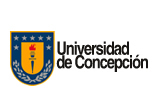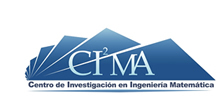News
Results presented in a Mathematical Civil Engineering undergraduate thesis could be applied to shape optimization problems
An Unfitted Hybridizable Discontinuous Galerkin Method in Shape Optimization is the name of the undergraduate thesis that a few days ago Esteban Henríquez Novoa successfully defended to become Mathematical Civil Engineer from the Universidad de Concepción, UdeC, .
Regarding the main achievements of his research work, the professional affirms that “I would say that there are two main results: the first one, is that to the best of my knowledge, this is the first work that combines hybridizable discontinuous Galerkin (HDG) methods and shape optimization. Furthermore, we deal with domains that are not necessarily polygonal. On the other hand, the analysis of the HDG method in non-polygonal domains was carried out for the case of mixed boundary conditions, Dirichlet and Neumann. For the latter, only numerical experiments were available in the literature, but not the corresponding error analysis".
Based on these results, new lines of research can be opened, explains Esteban, "since my work deals with a model problem for shape optimization with HDG, what comes next would be to analyze more complicated problems and specific applications, such as elasticity and Navier-Stokes equations”. His research was supervised by Dr. Manuel Solano Palma, academic from the Department of Mathematical Engineering of the UdeC and member of the Center for Research in Mathematical Engineering, CI²MA, and co-directed by Dr. Tonatiuh Sánchez-Vizuet, assistant professor of the Department of Mathematics of the Institute of Sciences of The University of Arizona, United States.
In this regard, Esteban explains that "since last year, Professor Solano and I have been working together. I asked him about the possibility of carrying out a research stay abroad. He told me about his collaborator, Professor Tonatiuh Sánchez-Vizuet, and that I could work with him on my undergraduate thesis at the University of Arizona. He suggested that I could work on shape optimization, but none of the three of us were experts on that. So, it seemed a good idea to learn about that topic together with Professor Sánchez-Vizuet”.
In this same sense, the academic from the university located in Tucson explains that "Professor Manuel Solano and I have already collaborated for several years in applications of the HDG method and in the development of the theory of the boundary data transfer method for non-polygonal domains. About a year ago, Manuel told me that he had a student who was very well prepared and motivated to do an internship, so we decided on a new project that would help Esteban to learn the basics of the analysis of the method and allow us to explore a new area of expertise. Esteban did an internship in Arizona between January and April 2022 and during that time he developed the foundations of his thesis”.
“Esteban is quite independent and very enthusiastic about learning mathematics. In fact, since last year he has been working on three different research projects. The results of one of them were those presented in his undergraduate thesis. We began a second work, on HDG for control problems, while he was taking my course on discontinuous Galerkin methods. Finally, a third work on coupled problems and formulations in Banach spaces was developed together with Professor Gabriel Gatica, in collaboration with the student of Mathematical Civil Engineering, Claudio Correa, and Professor Ricardo Ruiz-Baier”, details Dr. Solano.
On the other hand, Dr. Solano, also associate researcher at the Center for Mathematical Modeling of the U. of Chile, mentions that “Esteban's research stay at the U. of Arizona was possible thanks to several factors. First, the academic factor: Esteban had been working with me for about 10 months, achieving positive results in his research. This motivated us to propose to Dr. Sánchez-Vizuet a topic for collaboration. The second factor is the financial support to carry out the stay, which was possible thanks to one of my research projects Fondecyt 1200569”.
Professor Solano adds that Esteban Henríquez's research work was financially supported by Fondecyt 1200569 and Basal FB210005 projects.
Regarding the results obtained by Esteban, Prof. Sánchez-Vizuet highlights that "Esteban's work allowed us to explore a research area that was new to us and, furthermore, it allowed us to better understand and develop new arguments in the boundary data transfer path method. Esteban established the foundations for convergence analysis when the method is applied to problems with Neumann conditions. His thesis will be the basis for at least one research article and the starting point for other projects in this area.
Paulo Zúñiga Oyarzo, Ph.D. in Applied Sciences with a major in Mathematical Engineering from the UdeC and currently postdoctoral researcher at the University of Waterloo in Ontario, Canada, was part to the evaluation committee. “My participation in the committee”, explains Dr. Zúñiga, “is due to the connection between the research topic presented in Esteban’s thesis and what I developed at the UdeC, under the supervision of two CI²MA researchers, Ricardo Oyarzúa and Manuel Solano. In both cases, the differential equations studied are based on non-polyhedral domains that appear in applications that come mainly from the area of Engineering”.
“The numerical treatment of smooth domains in shape optimization problems requires some care”, he highlights regarding Esteban's results and adds that, “since finding a parameterization of the domain boundary is rarely possible, one usually resorts to a approximate geometry. Thus, it is inevitable to obtain sources of error that affect the quality of the numerical solution.
“However,” he states, “this is not the case of the work developed by Esteban, since he proposes to connect the shape optimization theory with an HDG method specially designed to deal with smooth domains. In particular, the theoretical results ensure that the quality of the numerical solution provided by the method will not be affected by the geometry of the domain, if several hypotheses that can be verified in practice are fulfilled. I understand that this is the first time that both approaches have been combined and that is why Esteban's work is remarkable”.
As for his near future, Esteban affirms that “I am in the process of applying to doctoral programs at two universities in the United States and another in Canada and, if everything goes well, I should continue studying next year at one of them”.
“Since I enrolled in the Mathematical Civil Engineering program”, he says, “my idea was to continue studying with the purpose of having a career as a researcher and, fortunately, I came to the right place to follow that path. I had excellent professors, who inspired and taught me during the process and I’m grateful for that”.


